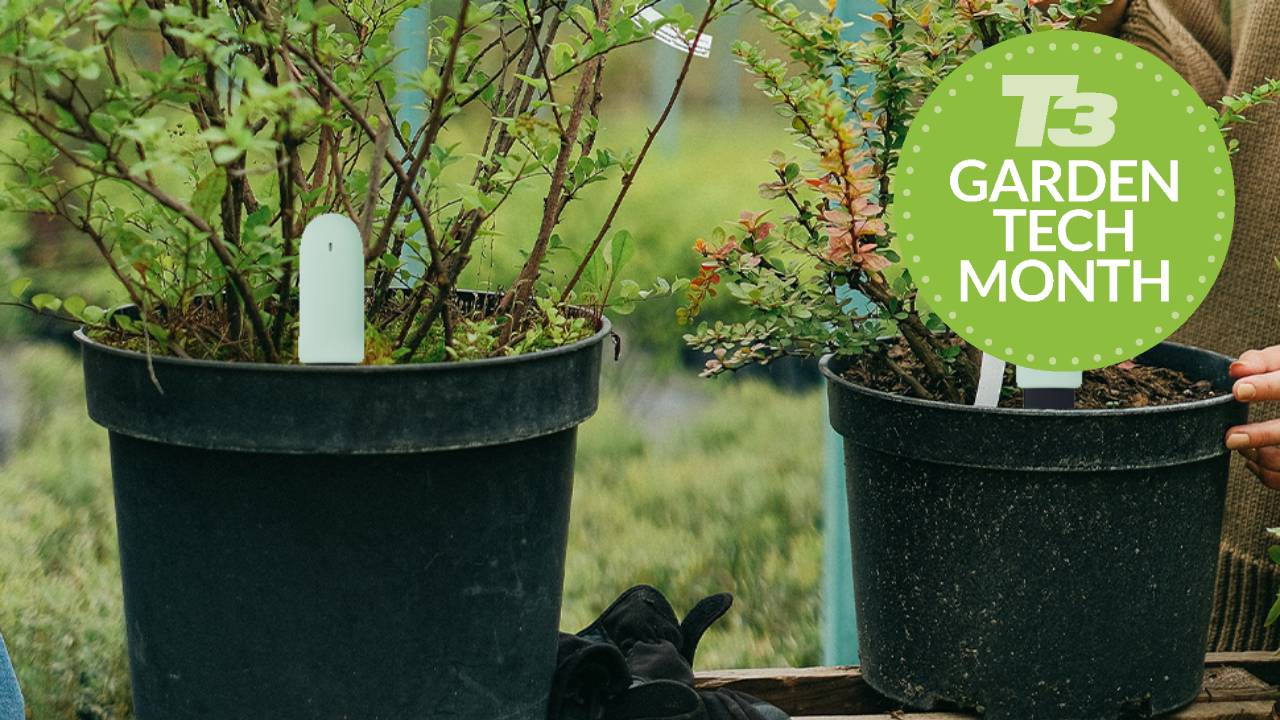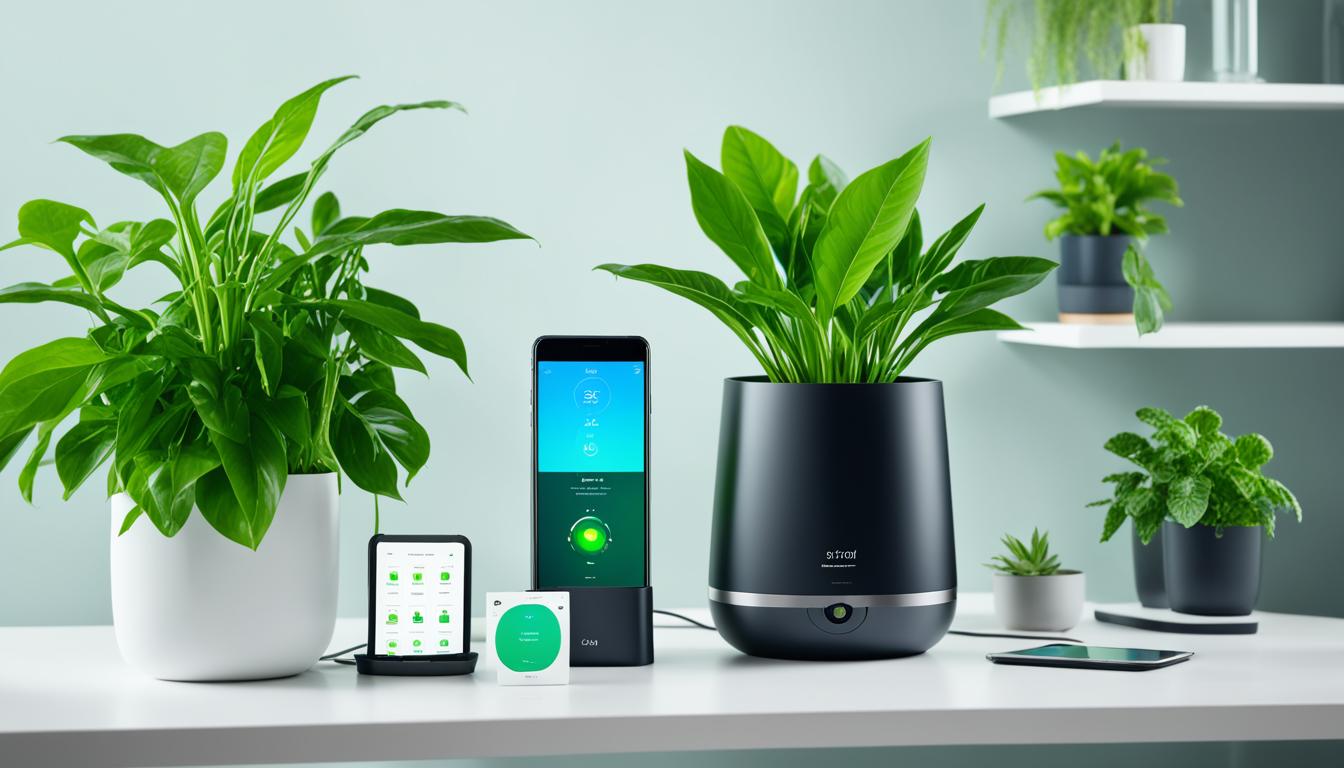Smart Plant Care Tools: Practical Solutions for Healthier Plants Every Day

The world of smart plant care isn’t just about gadgets—it’s about rewriting the story you share with every leaf and stem in your home. If I rewind a few years to my own Brooklyn apartment, picture this: succulents sagging in one window, a basil plant stubbornly yellowing by the sink, and the quiet embarrassment of yet another brown peace lily. My watering “system” consisted mostly of post-it notes, guilt pangs, and frantic Google searches (“how often do monsteras need water?”).

That changed the day I missed a week of watering while traveling for work—and came home to what can only be described as botanical carnage. Soil sensors? Automated irrigation? At that point, they sounded like something out of The Jetsons. But necessity nudged me into uncharted territory.
If you’ve ever felt that mix of hope (this time will be different!) and resignation (these leaves are going to drop anyway), you’re in good company here. What follows isn’t just another listicle or hands-off recommendation—it’s a living blueprint drawn from hard-won missteps and unexpected triumphs. We’ll walk through not only what works, but also how to weave shortcuts and next-level strategies together for truly effortless mastery—whether you’re corralling a couple desk plants or orchestrating an indoor jungle.
Let’s dig into the roots: what smart plant care tech can do for real people—and how you can sidestep the usual pitfalls with advanced techniques most guides miss.
Chapter 1: The Real Foundation—From Guesswork to Green Mastery
I remember my first soil moisture sensor, an early Xiaomi MiFlora, arriving in 2019—a box small enough to fit in my jacket pocket but promising miracles. It taught me lesson #1 right away: technology will show you problems you didn't even know existed.
What Is Smart Plant Care Tech?
At its heart: these systems are translators between your intuition and your plants’ invisible needs—delivering real-time insight instead of vibes-based guesswork.
- Sensors (think Xiaomi MiFlora or Plantsense EasyBloom) measure what we can’t feel reliably—moisture deep at root level, ambient light intensity at noon vs. dusk, pH shifts after fertilizing. If you’re curious about the best sensor options for your setup, check out our roundup of the Top Smart Sensors for Monitoring Indoor Plant Health.
- Automated Systems respond; Gardena’s Smart System doesn’t just water on schedule—it adapts based on soil readings.
- Apps/Integrations turn raw data into action: “Your Calathea wants water today,” pops up on your phone—even if you’re sipping coffee halfway across the city.
Back when I started experimenting with these tools, smart gardening advice was mostly written by engineers—not caretakers. That’s why so many new users get lost at step one: there’s a gulf between what tech can offer… and how humans actually live.
Chapter 2: Why This Matters Now—Tech Responding to Modern Life
The rise of urban jungles isn’t accidental—we’re seeking connection in tiny apartments, battling unpredictable schedules. In pre-pandemic days (doesn’t that sound ancient?), my travel calendar looked like confetti; any tool that could keep plants alive during yet another weeklong flight was worth gold.
But it goes deeper:
- Ubiquitous smartphones mean immediate feedback: see plant trends over weeks/months instead of relying on hazy memory.
- Sensor costs dropped fast after 2020—with $15 now landing you reliable Bluetooth probes.
- Smart tech is now less about novelty than efficiency—freeing up attention for growth instead of constant firefighting.
Here’s an unexpected twist: sustainability wins too. My water usage dropped by nearly 30% after installing automated irrigation tied to soil data—a micro-impact that scaled up across neighbors who copied my setup thanks to visible results (and fewer wilted leaves in hallway windows). If you want to dive deeper into how these systems can save you time and resources, explore How Automated Watering Systems Improve Plant Care.
Chapter 3: Where Data & Hands-On Ritual Meet
Don’t let boxed gadgets seduce you into passivity—true mastery comes from blending real-world cues with digital insight.

You’ll want a system built around three questions:
- What does each plant truly need?
- Where am I prone to error—watering too much/little? Overlooking air dryness?
- Which smart tools align with my routine—not just manufacturers’ promises?
Think about it: different homes mean wildly different baselines! My east-facing apartment needs more artificial light boosts midwinter than my friend’s sun-soaked loft two blocks away—but her ferns suffer from dry radiator air while mine deal with occasional mold outbreaks from overwatering.
System Building Blocks:
| Tool Type | Best For | Power User Shortcut |
|---|---|---|
| Soil Sensors | Consistency in watering; root-level accuracy | Pair two per large pot; compare high/low placement |
| Environmental Monitors | Tracking temp/humidity changes | Trigger connected humidifiers/fans via automation |
| Automated Watering Kits | Multi-plant setups or frequent travel | Set ‘skip’ days based on weather forecast integrations |
| Smart Grow Lights | Windowless areas; winter months | Program dynamic sunrise/sunset simulations |
| All-in-One Kits | Beginners/small spaces | Hack pods for custom seed choices & nutrient blends |
If you’re struggling with low-light spaces, understanding the Benefits of Smart Grow Lights for Home Gardeners can help you make the most of your setup.
Chapter 4: Getting Started—the Storyteller's Step-by-Step Ritual
Let me unveil the playbook I wish someone had handed me before my first “smart” attempt ended with saturated soil and confused notifications:
Step One – Inventory Your Challenges
Walk past every plant with a notebook—or better yet, snap photos as you go.
Ask yourself aloud (“Why am I always worried about this calathea?”). Dialogue makes patterns visible:
"Every time I travel… those spider plants crisp up."
"This fern seems fine until sudden yellow spots."
Step Two – Target Your Weakest Link
Don’t scatter money across flashy gadgets! Instead:
- Struggle to remember watering? A single $20 soil sensor plus weekly app checks is often all it takes. If you need help choosing the right tool, our guide to Smart Soil Moisture Meters: Choosing the Best for Your Plants breaks down top picks and what to look for.
- No sunlight? Invest directly in Philips Hue Grow Bulb or GE LED strips; skip everything else until light levels stabilize yields.
- Trying not to kill rare orchids? Layer humidity and temperature monitors before automation—you’ll spot patterns before warning lights flash red.
Step Three – Analyze Product Details Like an Insider
Beyond Amazon stars:
- Scan user forums or subreddits (#HouseplantClub is gold). You’ll find “I tried both…” stories with specifics no brand website reveals.
- Look for firmware update frequency; nothing kills investment faster than orphaned apps.
- Is it Bluetooth-only? Many MiFlora/Parrot Flower Power sensors won’t sync outside their native apps unless hacked via Home Assistant (more advanced users below!).
Step Four – Placement Isn’t Plug-and-Pray
My first big fail? Sticking sensors an inch below the soil surface—so readings shot up after every quick pour but roots still dried out further down.
Now, I double-check probe depth matches root ball location—and move sensors monthly so one spot doesn’t become permanently compacted (and misleading).
Step Five – Don’t Rely Solely on Tech
Even after setting thresholds per species (“moist” is not universal!), I kept crosschecking once a week using old-school finger tests—a trick borrowed from Grandma Milley back when her garden put mine to shame!
Chapter 5: Advanced Shortcuts & Next-Level Mastery
After six months automating routine care, something clicked—I wanted more insight, not just convenience.
Here are three proven shortcuts most guides overlook:
1. Stack Data Streams for Real-Time Decisions
Combine inputs within platforms like Apple HomeKit or Home Assistant:
"If room humidity <40% AND monstera probe reads 'dry' THEN trigger humidifier + water reminder."
This avoids repetitive routines during seasonal swings—especially handy during NYC's brutal indoor-dry winters!
2. Predictive Scheduling
Some newer apps don AI hats—Planta now predicts when your plant will “feel thirsty” based on daylight hours plus observed transpiration rates over weeks rather than defaulting to static intervals.
Set reminders NOT by calendar date—but by trendline deviation (“Water only if the last three readings drop faster than baseline”).

3. Microclimate Automation
Pair Netatmo Weather Station outputs ("windowsill temp = X") with smart grow lights/humidifiers via IFTTT routines:
"Raise lights AND switch fan speed if temps hit above preferred orchid range."
Suddenly your setup doesn’t just automate tasks—it actively shapes environment minute by minute as conditions shift.
Pro Tip:
For large collections (~12+ pots), designate one sacrificial test pot each season where new settings run wild before rolling out across all plants—a hack saving both time and heartbreak if experimental rules go awry!
Chapter 6: Tools Tested By Time (And Errors)
I don’t recommend anything I haven’t seen succeed in either my own jungle or those of clients and friends who text me desperate photos from airports or snowstorms:
A) Soil Sensors
Winner: Xiaomi MiFlora / Flower Care – Simple app links, robust battery life (~9 months!), easy multi-pot rotation
Lesson learned: Clean sensor tips monthly—even invisible grime skews readings drastically after heavy fertilizer use!
B) Environmental Monitors
Winner: SensorPush Wireless Thermo/Hygro – Set-and-forget reliability + long-range notification
Cheat code: Place one near heat sources AND one near exterior walls—the comparison reveals draft/cold spots fast
C) Automated Watering
Winner: Gardena Smart System – High upfront cost pays off tenfold if managing >8 plants—or any balcony setup exposed to erratic weather
Money-saving tip: DIYers have success daisy-chaining cheap aquarium tubing for custom arrays at half price
D) Grow Lights
Winner: Philips Hue Bloom/Bulb – Full spectrum control + scheduled cycles via app integration
Hack: Use color-shifting features not just for appearance but simulating dawn/dusk transitions (reduces leaf stress!)
E) All-in-One Ecosystems
Starter: Click & Grow Smart Garden Series – A friend’s gift turned gateway drug; still unbeatable stress-buster intro kit
Budget maximizer: Reuse pods w/your own seeds once confident manual mixing solves nutrient cost issue…
Chapter 7: Real Stories From The Trenches
Three true tales—the kind that stick because they aren’t sanitized for catalogs:
Janine vs The Unforgiving Calendar
Janine traveled twice monthly while caring for twelve hydration-hungry monsteras and calatheas—a recipe for disaster until she linked three MiFloras plus Gardena irrigation through Home Assistant hub.
Her verdict after six months?
"Not one dead leaf since! Even got notified during layover in Lisbon when humidity tanked—I triggered extra misting remotely!"

Sam The Skeptic
Sam tried Netatmo environment monitors paired with classic LED grow strips—but hesitated automating everything out of fear he’d lose touch.
His workaround?
“Alexa—jungle mode!” triggers coordinated light/humidity lifts only when he feels the mood strike—and he says his collection has never looked happier thanks to this hybrid approach. If you’re interested in blending smart plant care tools with your favorite voice assistant, see our guide on Integrating Smart Plant Care Tools with Voice Assistants.
Lisa The Budget Botanist
Lisa wanted ripe balcony basil without splurging on pro kits—instead pieced together used Parrot Flower Power sensors ($15 eBay steal), Click&Grow starter kit indoors ($80 holiday sale), then moved lessons outdoors using timer plugs + GE LEDs her second season…
Yield doubled—and she now runs Zoom clinics teaching other city dwellers her DIY approach!
Chapter 8: Common Pitfalls & How To Leap Over Them
A candid admission—I’ve triggered more false alarms than actual emergencies some months! Here are field-tested ways around classic traps:
- Blind Trust In Defaults: Always reset thresholds per species! If unsure, start conservative (“less frequent alerts”) then dial sensitivity up as confidence grows.
- Sensor Placement Fails: Rotate probe locations every month; make sure placement mimics actual root environments—not just surface where evaporation spikes post-watering mislead data flows!
- Manual Crosschecks: Schedule calibration rituals monthly (first Sunday!). Clean tips + compare against analog methods (finger poke/finger pinch).
- Over-Automation Burnout: Keep Sunday mornings sacred for hands-on tending regardless what app says—you’ll catch pests/fungus far sooner than any algorithm right now!
- Notification Fatigue: Fine-tune—or outright mute noncritical alerts once routines settle down; nothing saps joy faster than too many digital interruptions.
Chapter 9: Troubleshooting & Recovery Plan
Stuck syncing devices? App behaving oddly post-update?
Most issues boil down to power/cable resets or rogue firmware mismatches—with online support communities offering fixes way before official channels catch up!
Keep backup batteries handy (trust me); clean all contacts regularly especially after fertilizer-heavy weeks; factory-reset as last resort only after consulting relevant subreddits/forums—you’ll avoid hours lost re-pairing everything from scratch otherwise!
Still off track? Temporarily revert one device at a time until culprit emerges—in nine out ten cases it’s simple low-battery drift throwing everything else off kilter…
Chapter 10: Your Personalized System Blueprint (with Built-In Shortcuts)
Ready to build your definitive system?
1️⃣ Walk through every room/plant snapping pics/narrating pain points aloud
2️⃣ Pick ONE focus area first (watering/light/humidity)—master that before layering complexity
3️⃣ Dive deep into reviews/user hacks exactly matching your chosen device/platform combo
4️⃣ Install devices methodically—not rushed! Run test cycles/mock alerts/calibrate carefully day-one
5️⃣ Track readings WITHOUT kneejerk responses at first; aim for pattern recognition over micromanagement
6️⃣ Fine-tune thresholds/routines weekly until they feel invisible rather than intrusive
7️⃣ Join community forums around chosen gear—you’ll find insider tricks manuals skip entirely!
8️⃣ Protect hands-on inspection ritual as sacred part of weekly routine no matter how automated things get!
9️⃣ Every three months review which bits truly saved time/stress—and prune anything feeling redundant/disruptive
Epilogue: Thriving Together In The Age Of Smarter Greenery
Technology should amplify—not replace—the ordinary magic that comes from nurturing life indoors. Every lush new shoot is part mathematical feedback loop…part intuition sharpened by curiosity…and yes, sometimes serendipity born of simple observation no algorithm could predict.
If there’s one lesson growing smarter has etched deepest into me it’s this:
Let tech illuminate mysteries beneath the surface—but never cede wonder entirely to automation…your role as caretaker remains irreplaceable.
So choose your next experiment wisely—
Will it be calibrating hydration alerts perfectly tuned to your pothos’ real needs…or scripting Alexa routines that bring dawn indoors each wintry morning?
Whatever path beckons today,
remember this journey isn’t about perfection—
it’s about writing new chapters where technology quietly supports,
but YOU remain author-in-chief of every thriving green corner you claim as home.
Which shortcut—or bold leap forward—will define your story next?



